Cutting Edge Science
New science building to nurture talent pipeline for soaring STEM needs.
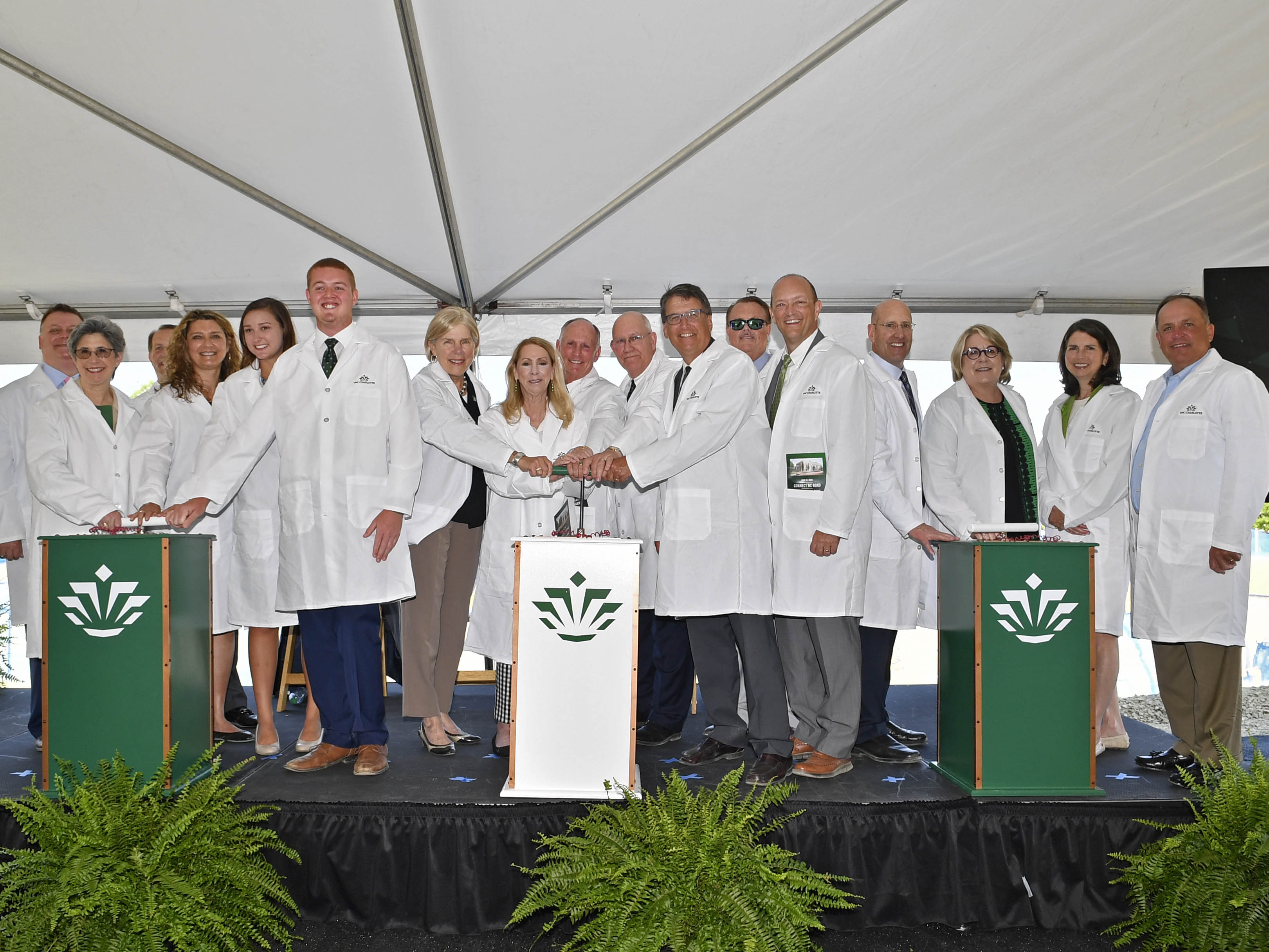
Monday, June 3, 2019
On May 31, 2019, UNC Charlotte broke ground at the corner of Craver Road and Mary Alexander Road for a new campus facility that, when complete, will reshape the way science is taught and studied at North Carolina’s urban research university. Shared by University leaders and faculty, staff, students, alumni, public officials, community partners and friends, the celebratory event represented the fulfillment of a commitment made in 2016 with the passing of Connect NC, a $2 billion infrastructure bond designated in large part to support the rapid growth of the state’s public colleges and universities.

Doctoral STEM students were on hand to celebrate the groundbreaking with a fun science experiment.
“This one-stop-shop for our chemistry, biology and physics programs is an indisputable necessity,” said Chancellor Philip L. Dubois. “Skyrocketing regional employer demand for science, technology, engineering and mathematics (STEM) professionals—compounded by enrollment that has nearly tripled since the 1984 opening of our existing science facility—requires a state-of-the-art solution, which this new building provides.”
Despite the 130,000 square feet of flexible classrooms and laboratories that will be available when the building opens in 2021, space will immediately be at a premium. Additional funding proposals totaling $45 million currently are being considered by the North Carolina General Assembly to renovate the Burson and Cameron academic buildings. If passed, the funds will make possible the updating of labs and development of co-working spaces for faculty and students that are on par with those of the new building.
“UNC Charlotte’s student population likely will surpass 30,000 for the first time this fall; approximately half have declared or will declare a STEM major,” said Provost Joan Lorden. “Our ability to prepare students for work and continuous learning across their lifetimes depends upon our capacity to provide challenging classroom and laboratory experiences in a problem-oriented, 21st-century learning environment. With well-designed teaching, learning and research spaces that promote innovative interdisciplinary collaboration, UNC Charlotte will continue to attract top-notch faculty and students as we make a distinctive impact in STEM fields.”
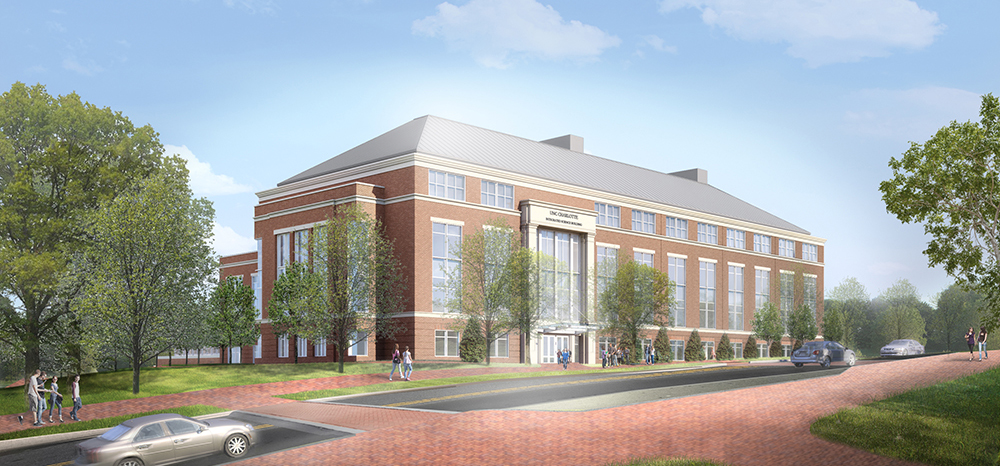
New science building rendering, as seen from Craver Road.
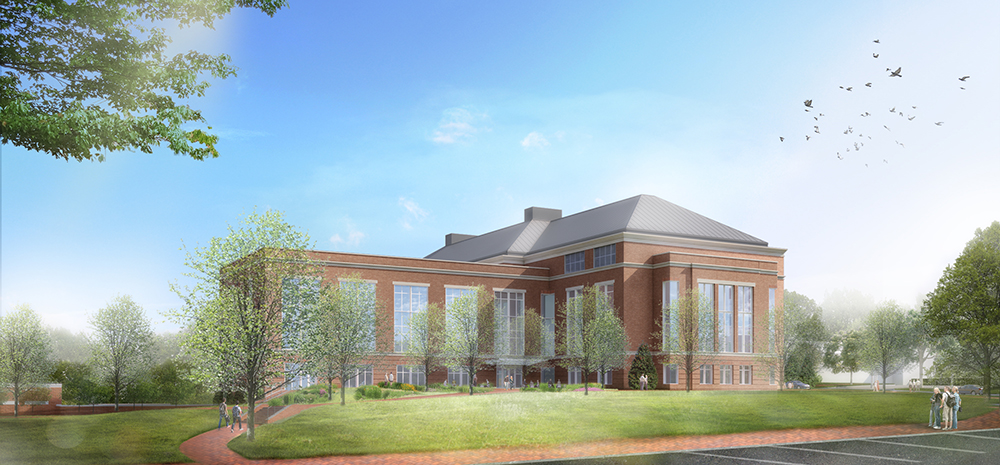
View from the North Mall.

View from Mary Alexander Road.
STEM’S SOARING NEEDS
Employment in STEM occupations has grown 79 percent since 1990, outpacing overall U.S. job growth. Currently, the Charlotte-Concord-Gastonia tech corridor ranks fourth in the nation for highest STEM employment growth. While it’s projected that the U.S. will need to fill 3.5 million STEM jobs by 2025, as many as two million will go unfilled due to a lack of workers with appropriate skills.
This presents a tremendous opportunity—for UNC Charlotte and other institutions—to serve as providers of prepared, high-quality talent for the growing health care; IT; data science; business analytics; bioinformatics; artificial intelligence; and civil, mechanical and biomedical engineering sectors and more.
“North Carolina’s universities are essential to the state’s economic success, particularly where the economy is growing,” said UNC Charlotte Trustee Sharon Decker, who served as North Carolina’s Secretary of Commerce from 2013-15. “Investment in these fields ensures that we are growing citizens with the skills necessary to recruit the best jobs for North Carolina.”
Notably, 400 UNC Charlotte graduates were hired last year by Atrium Health, a regional health care industry leader and University partner, for an array of research and care-providing positions.
“UNC Charlotte is a talent pipeline for us,” said Carol Lovin, Atrium’s executive vice president and system chief of staff of the two institutions’ long-standing relationship. “We can count on people when they’re hired to be ready to go from day one.”
PREPARING STUDENTS FOR CAREERS OF TODAY AND TOMORROW
The flexibility of the new science building, designed for interdisciplinary research and collaboration, is sure to be a leading factor in the continued career readiness of undergraduate and graduate students.
“We hear often from employers that our students are better prepared than other graduates; they are ready to contribute immediately,” said Rick Tankersley, vice chancellor for research and economic development. “We intend to build on what makes UNC Charlotte inherently different from other leading institutions—getting undergraduate students involved in research very early in their college experience. In fact, the opportunity to do meaningful research at all levels opens discovery and learning, which helps build critical skills and makes students very attractive to potential employers.”
Faculty understand and appreciate the value of collaboration among various fields, how it might influence their students’ perceptions of science, and the ways it could affect recruiting at UNC Charlotte.
“Prospective students will see not only leading-edge facilities, which are available at a lot of institutions, but a new and modern approach to science—an amazing environment for learning,” said Juan Vivero-Escoto, associate professor of chemistry. “The ability to talk regularly with experts in areas other than their own will give them an interdisciplinary perspective, common at pharmaceutical and biotech companies, which means a leg up for finding an awesome job.”
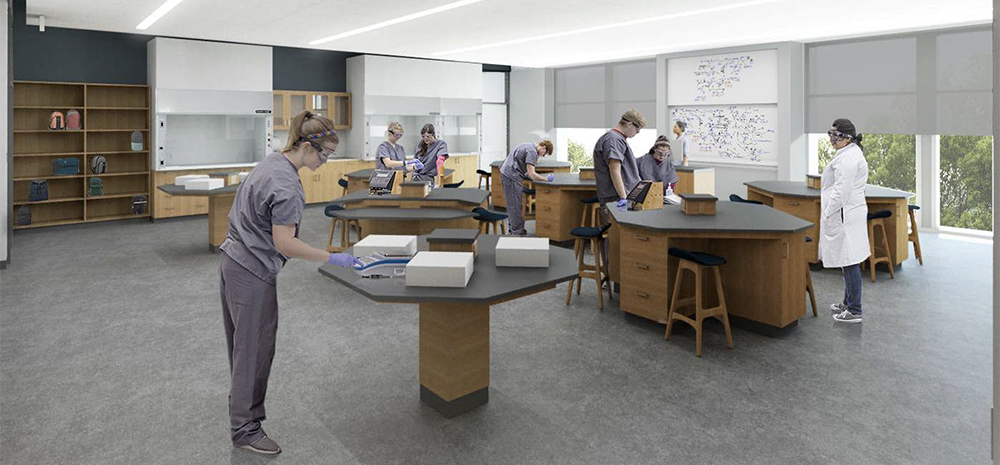
A rendering of the interior of a teaching lab in the new science building.
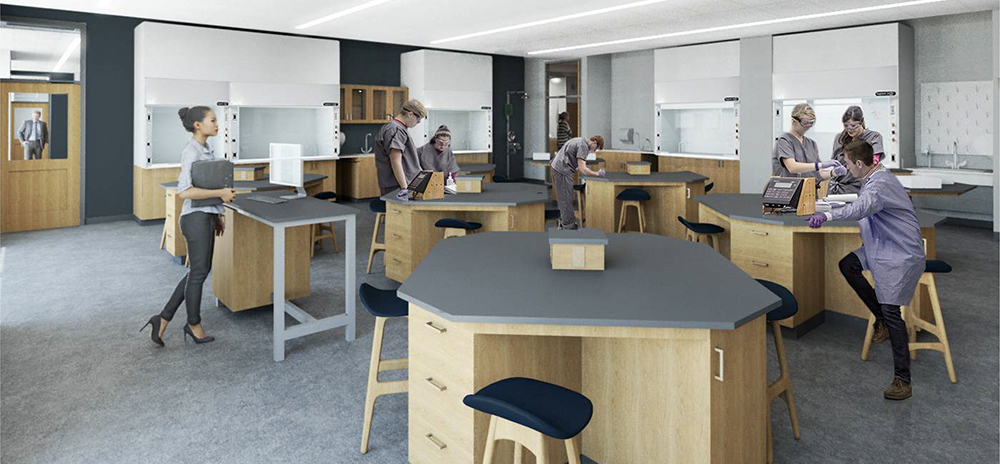
Another teaching lab rendering.
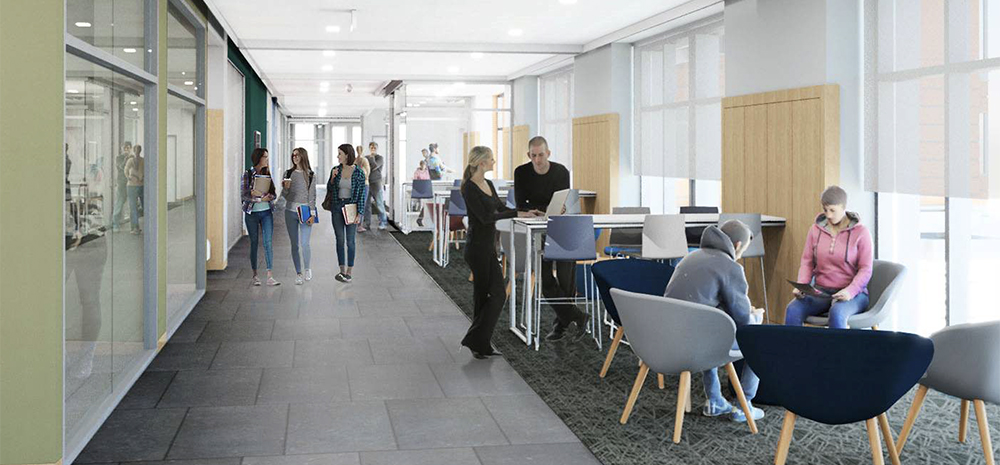
Rendering of the North Gallery.
IT HELPS TO HAVE FRIENDS IN KEY PLACES
Support for Connect NC, which started as House Bill 943 in the North Carolina General Assembly, was championed early by Representatives Dean Arp ’99 (Union), Bill Brawley ’78 (Mecklenburg), and Jason Saine ’95 (Lincoln), along with former Senator Bob Rucho ’94. Then-governor Pat McCrory recognized its significance for the continued growth of the state, asserting unequivocally that the bill would position North Carolina to “prepare for the future rather than react to it.”
Arp, whose master’s degree from UNC Charlotte is in civil engineering, crafted the bill appropriating $90 million of its total $2 billion to the new science building. (Remaining funds are shared among the UNC System’s other 16 campuses for capital and infrastructure improvements related primarily to STEM projects; the state’s 58 community colleges; and other entities in the Piedmont region to address needs related to higher education.) At a point during the legislative process when the appropriation appeared to be in jeopardy, Brawley and Saine resolved to preserve it on behalf of their alma mater due to the University’s vital role in the economic health of the region.
“We were willing to take the lawmaking process to a standstill to ensure the future of the campus,” recalled Saine of the legislation that was eventually approved by voters statewide with a margin of 66 percent.
“Lives are being changed at UNC Charlotte every day, and the course of North Carolina’s progress is being improved every day,” observed Brawley, who was named Distinguished Alumnus in 2019. “I want everyone in this area to have the same opportunity I had.”
